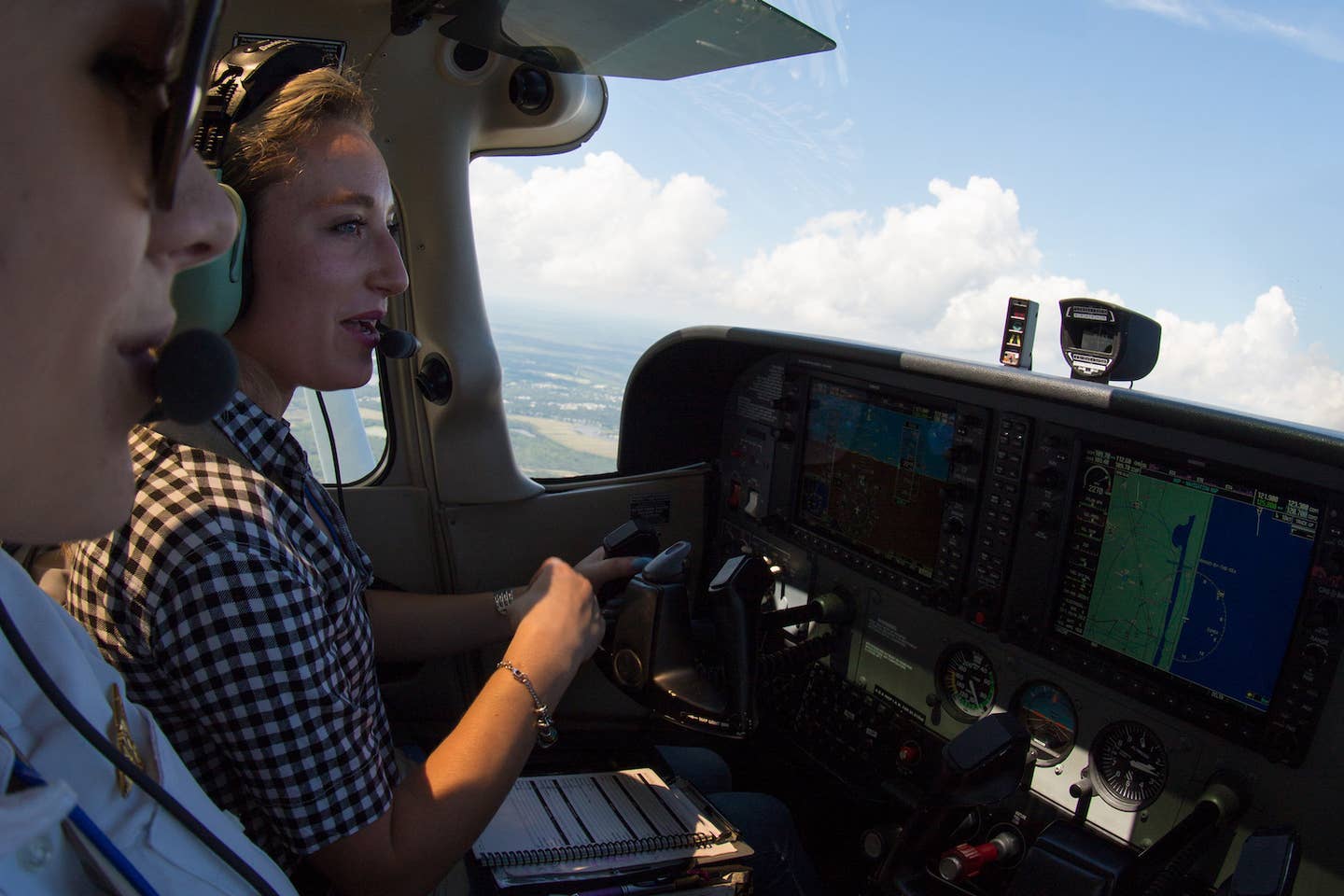
Flight training, by its nature, brings people in close proximity to one another. David Massey/Embry-Riddle Aeronautical University
On March 22, Michigan, Ohio and Louisiana joined Illinois, New York, Delaware, Connecticut, California and Oregon as states that have ordered residents to remain in their homes as the nation wrestles with the deadly COVID-19-inducing Coronavirus. The illness can be spread when an infected individual coughs, sneezes, or even touches an object later touched by another person. Shelter-in-place orders typically call upon non-essential businesses to close until further notice. To members of the flight training industry, the first question when these orders began to hit was defining a “non-essential business.”
In a newsletter posted last Friday, the Flight School Association of North America (FSANA) offered context to the stay-at-home executive order generated on March 19 by California Governor Gavin Newsom. The governor’s message in part said, “The federal government has identified 16 critical infrastructure sectors whose assets, systems and networks, whether physical or virtual, are considered so vital to the United States that their incapacitation or destruction would have a debilitating effect on security, economic security, public health or safety, or any combination thereof. I order that Californians working in these 16 critical infrastructure sectors may continue their work because of the importance of these sectors to Californians’ health and well-being.”
FSANA’s newsletter included links to the U.S. Department of Homeland Security’s Cyber Security and Infrastructure Security Agency (CISA) which identifies the 16 sectors and their related businesses. Under the Transportation Systems Sector page, the agency said, “the aviation mode includes commercial and recreational aircraft (manned and unmanned) and a wide-variety of support services, such as aircraft repair stations, fueling facilities, navigation aids, and flight schools.”
FSANA said, “The California Executive Order is important to all flight schools because it specifically ties the list of businesses that may remain open to a federal agency, CISA. It is FSANA’s opinion that flight schools outside of California may also choose to remain open because of this very important designation. FSANA believes the CISA definition of critical infrastructure businesses should preempt any state or local declarations that are to the contrary.”
Despite this wording, there are still a few gray areas for some operators, such as those run by universities. As one flying club operator who asked not to be identified said, “the letter of the law is clear, while the spirit of the law provides some ‘loopholes’ which can be rationalized.”
Bob Hepp owns Aviation Adventures, a Part 141 flight training school in Manassas, Virginia with three additional locations in the area, employing 42 instructors who provide private, commercial and instrument training. He said the company is nearly ready to also offer multi-engine and CFI ratings. Hepp told Flying that while he knew he could easily meet the letter of the law and remain open for business, he decided along with his other managers that keeping the doors open could also invite serious trouble.
He used the school’s extensive mailing list on Monday, March 23, to explain to customers that Aviation Adventures was closing its doors because of the threats posed by the COVID-19 virus. “We’re a flight school with instructors and students who are trying to sit 6 feet apart on the ground. But in an airplane they simply can’t. Everyone is touching the same flight controls and buttons on the avionics and no matter how much we try to disinfect after every flight, someone could miss something. I don’t want to be responsible for someone getting sick. I feel strongly that we did the right thing.”
Hepp said reactions to the company’s closure decision have all been positive. The question for him and other flight schools is what happens next, especially since government attempts to flatten the curve will certainly benefit the healthcare system if they’re successful, but those efforts will add additional burdens to small businesses like flight schools if the pandemic stretches out for many months. Hepp said he’s been encouraging students to continually reschedule their flight training sessions, even if they get bumped a few times, because when the school does reopen, he knows there will be a rush for instructors. Even now, “It normally takes about three weeks for a student to get on an instructor’s schedule,” Hepp said. Right now, he’s hoping, Aviation Adventures may be able to reopen by the third week of April.
To keep temporarily-grounded students engaged, Hepp created a to-do list that includes:
- Complete the online coursework for the program you are currently working on.
- Take the Knowledge Test(s) for your programs.
- Chair Fly, Chair Fly, Chair Fly
- Keep pushing your flight training schedule out, based on when we hope to re-open.
- Stay in contact with your instructor
- Take some on-line courses, like the free ones in faasafety.gov
You can find other tips for continuing your training in our companion news feature, “Training Providers Help Build Your Aviation Skills At Home.”

Sign-up for newsletters & special offers!
Get the latest FLYING stories & special offers delivered directly to your inbox






